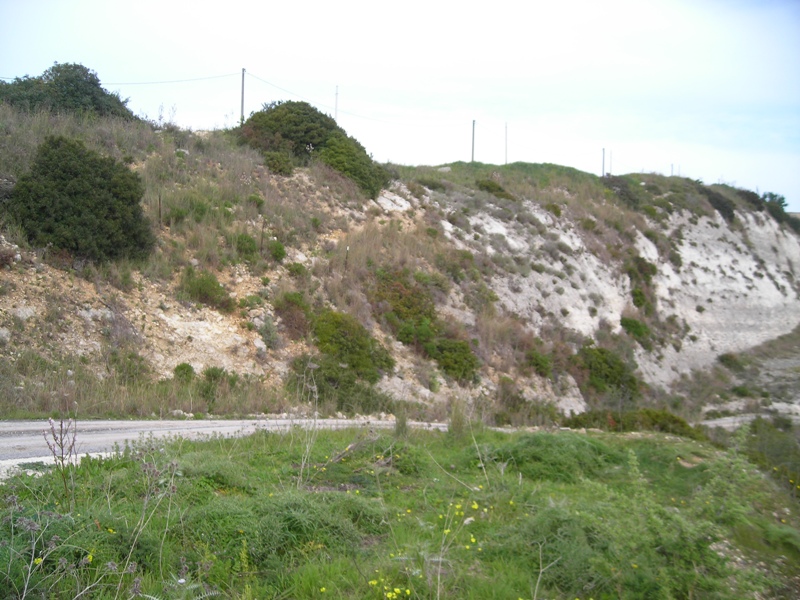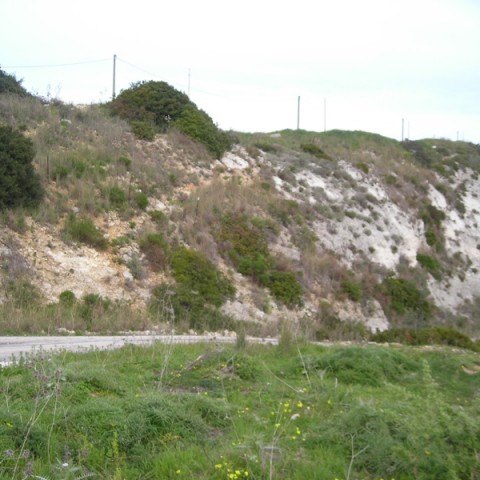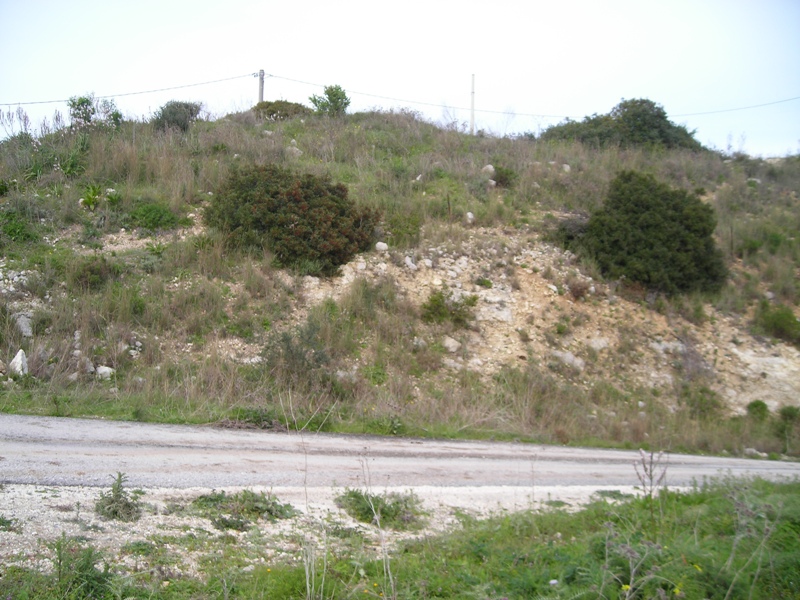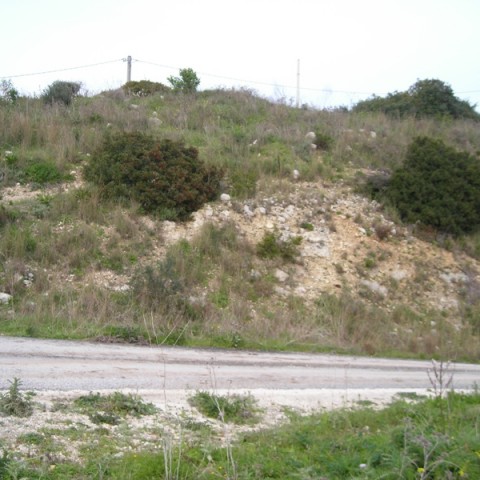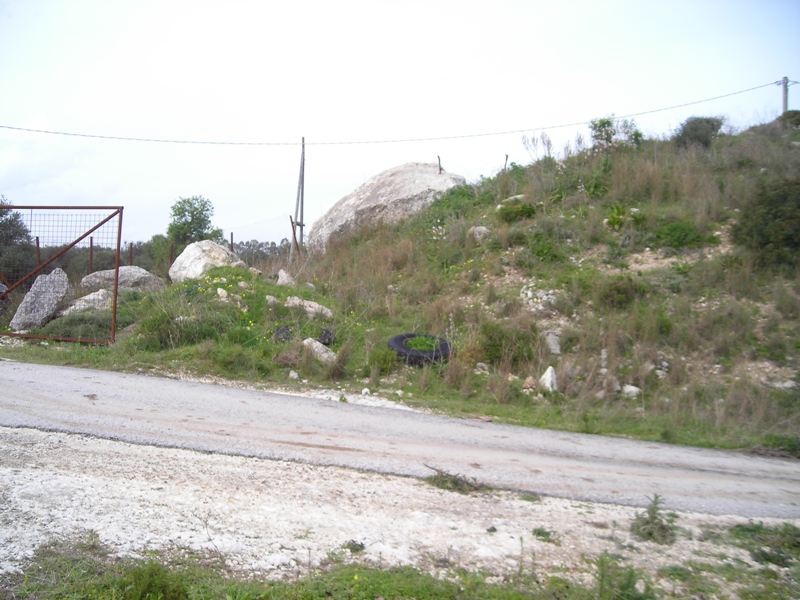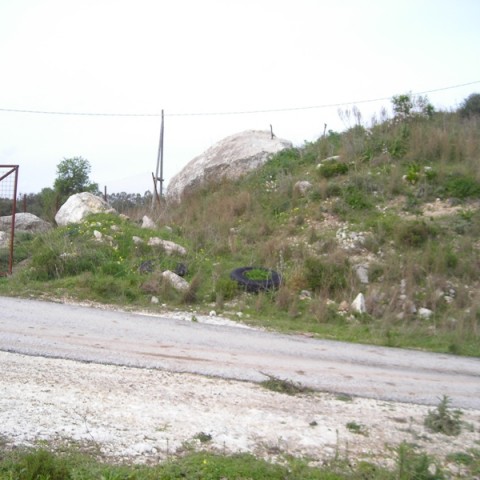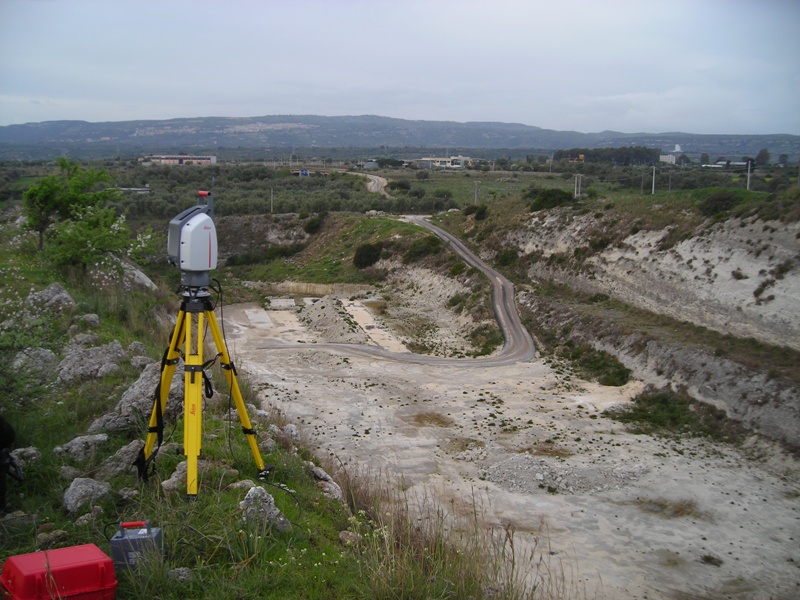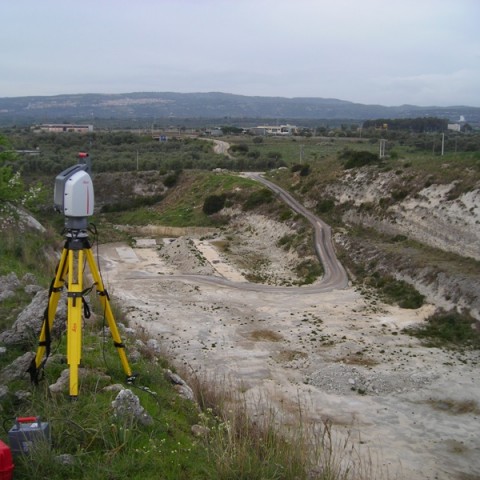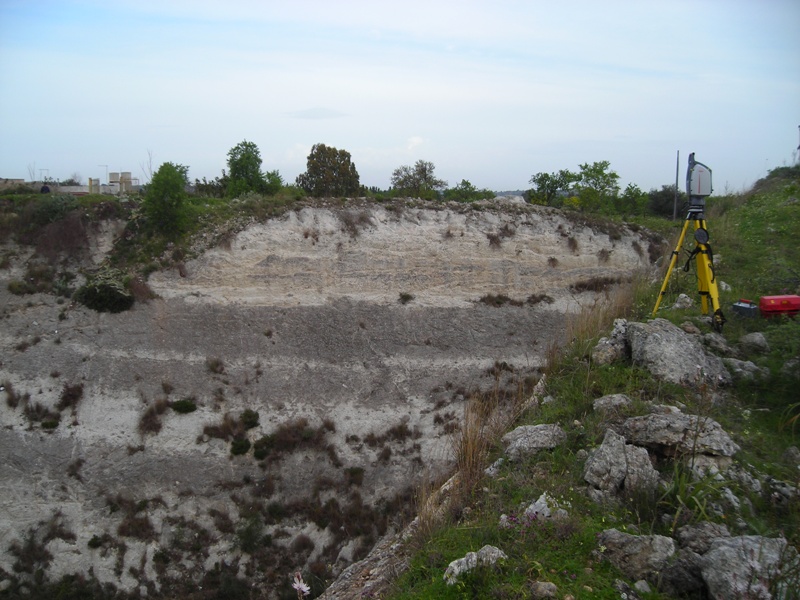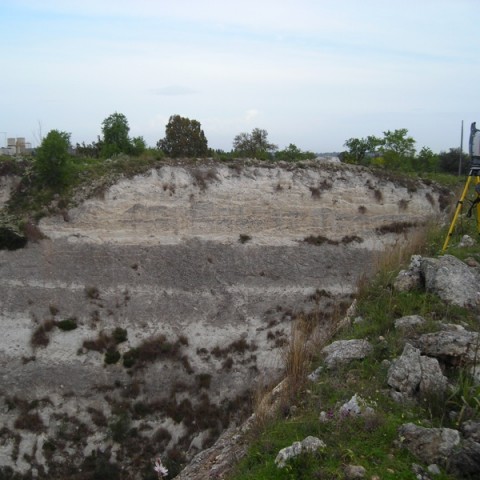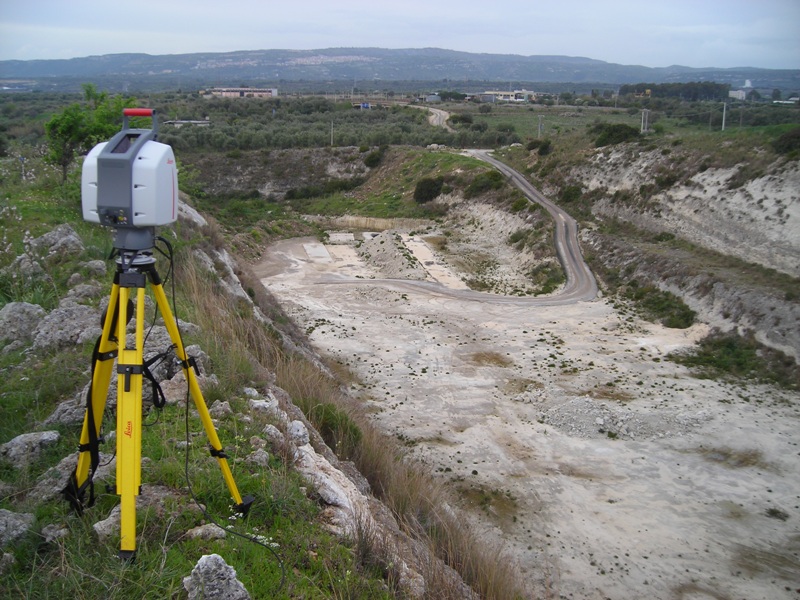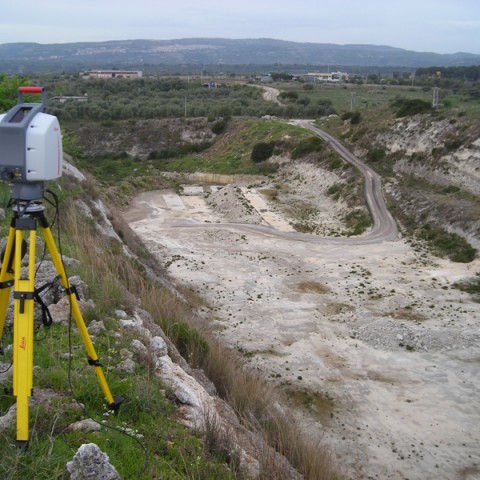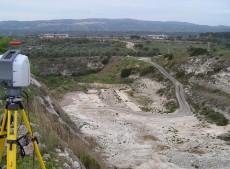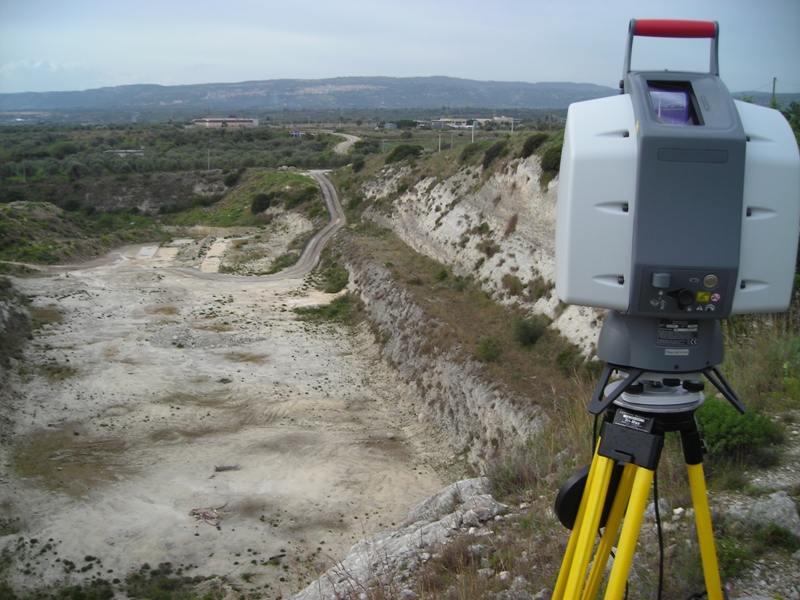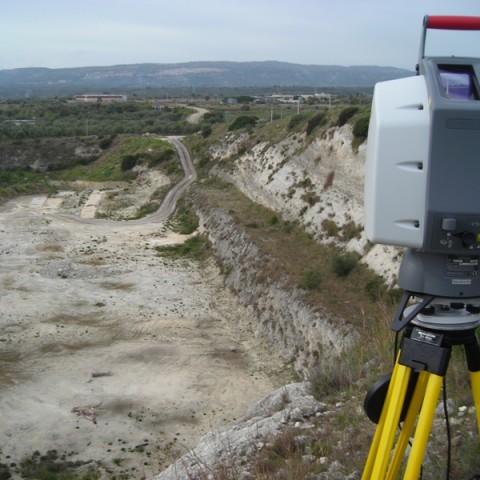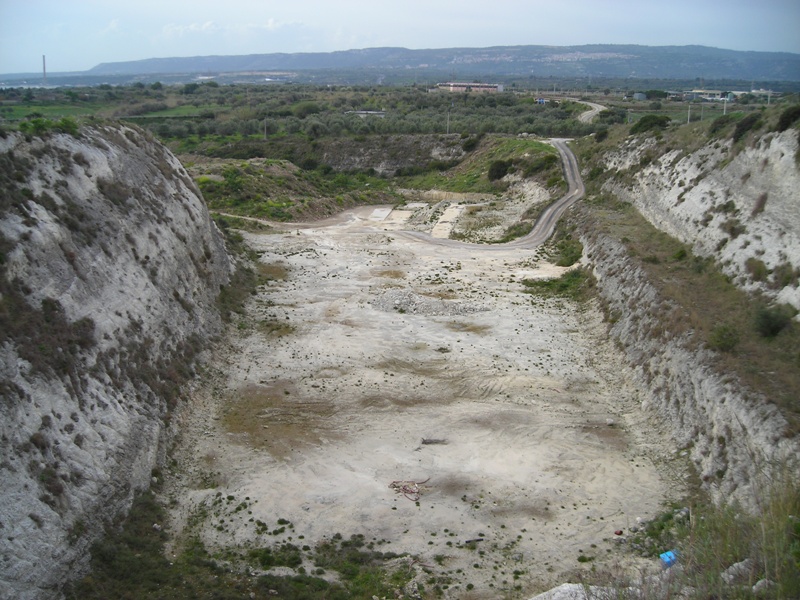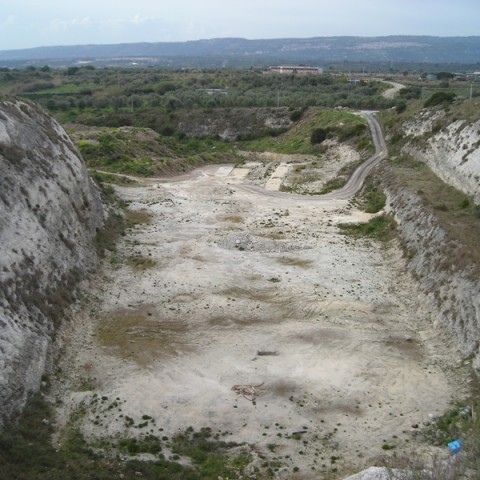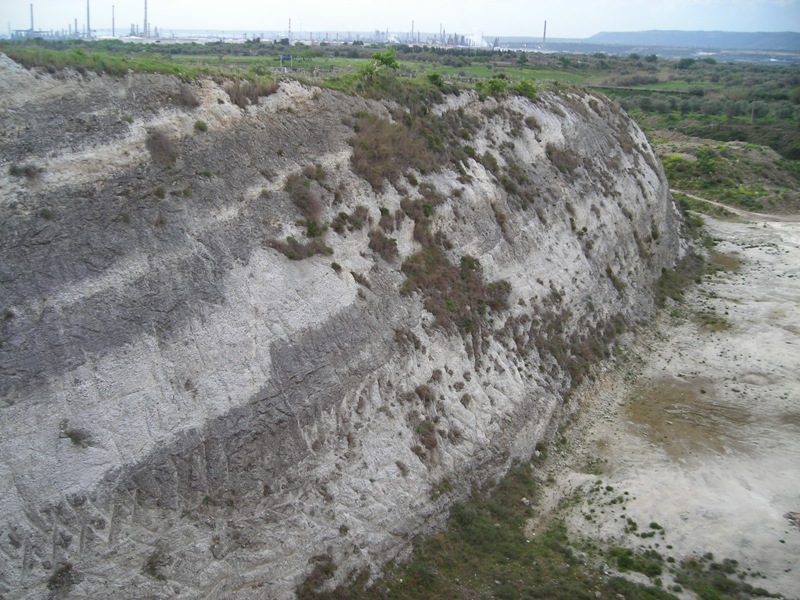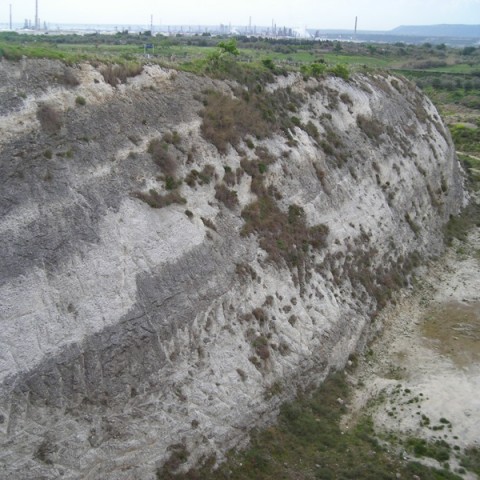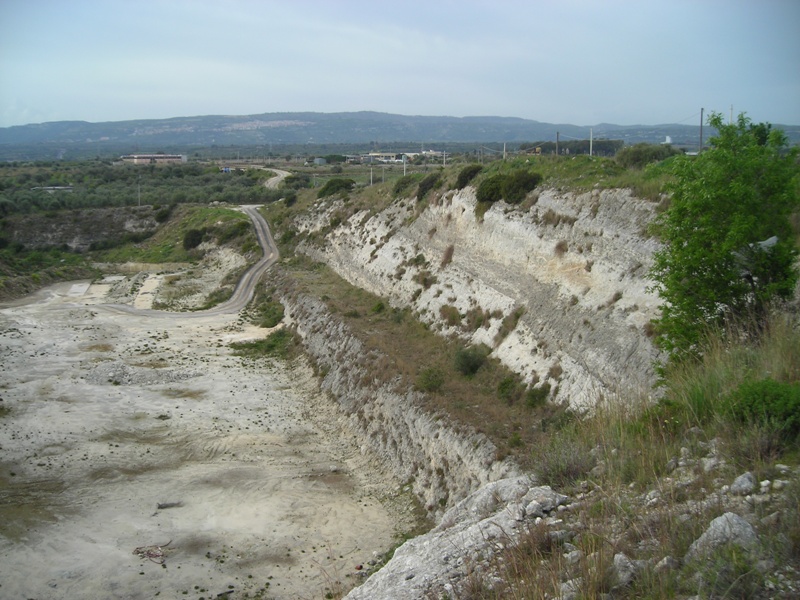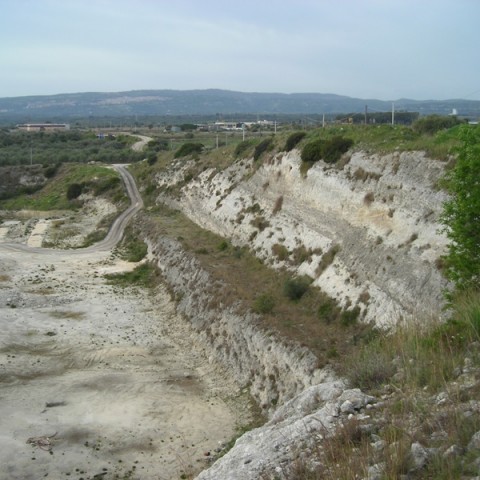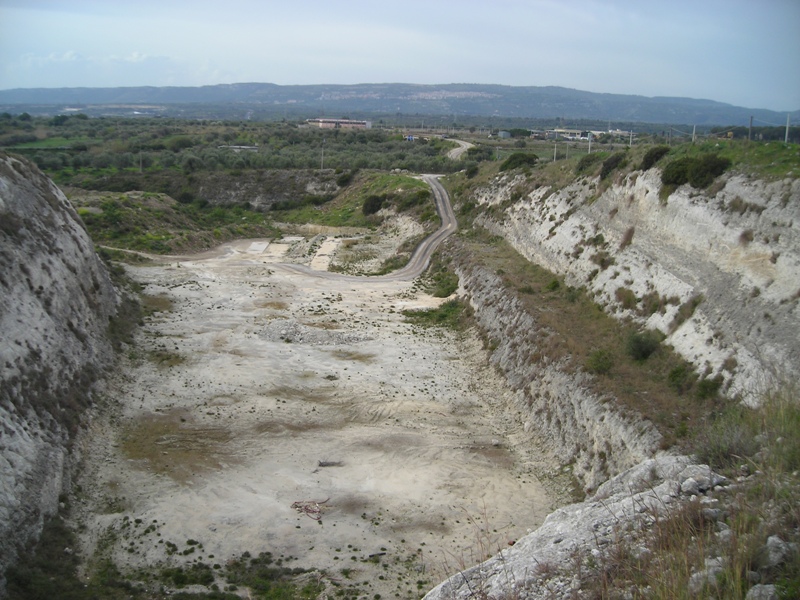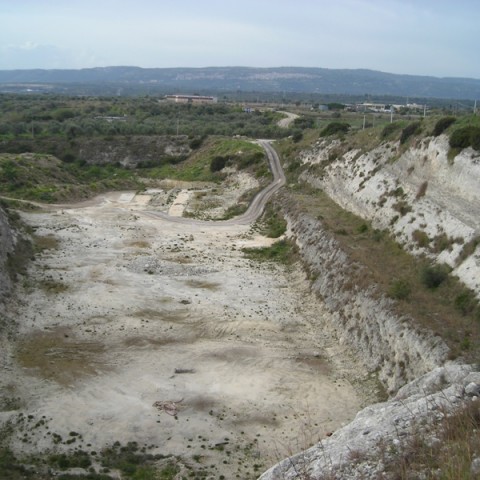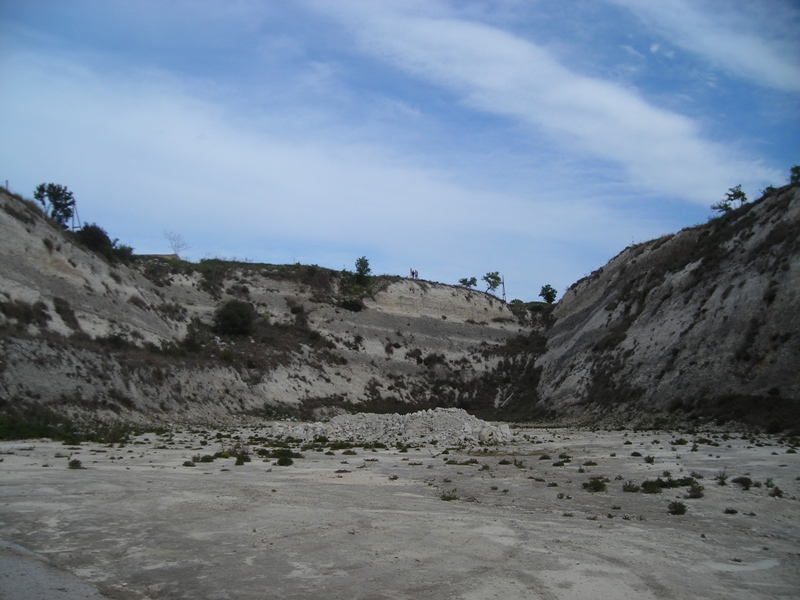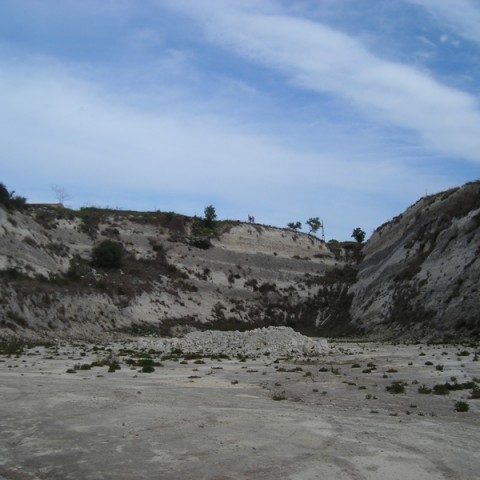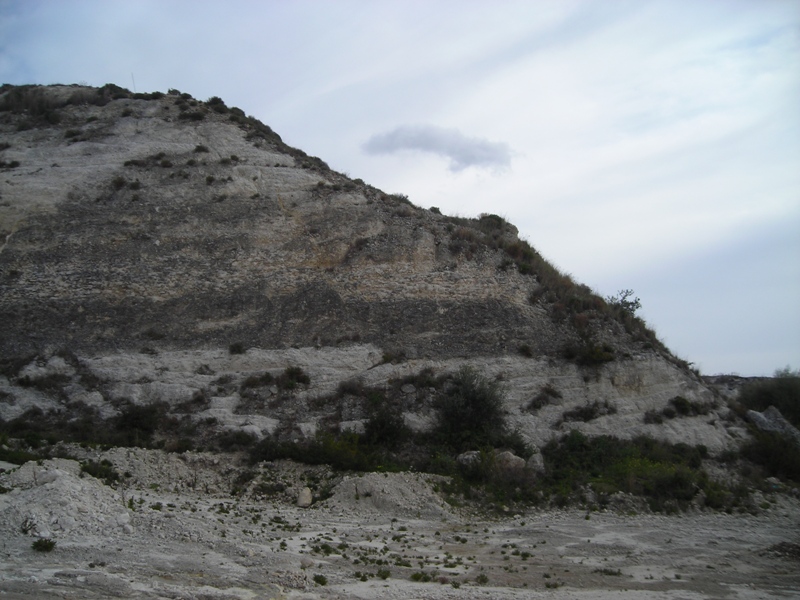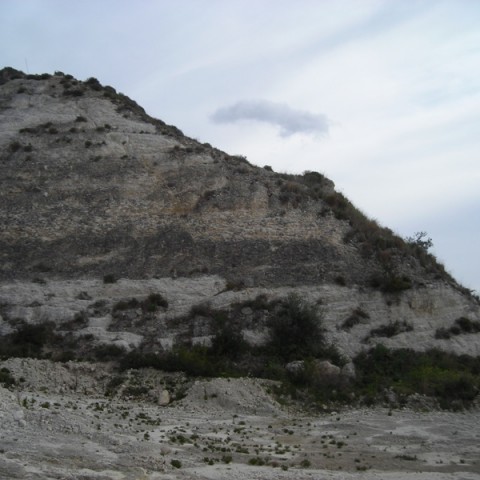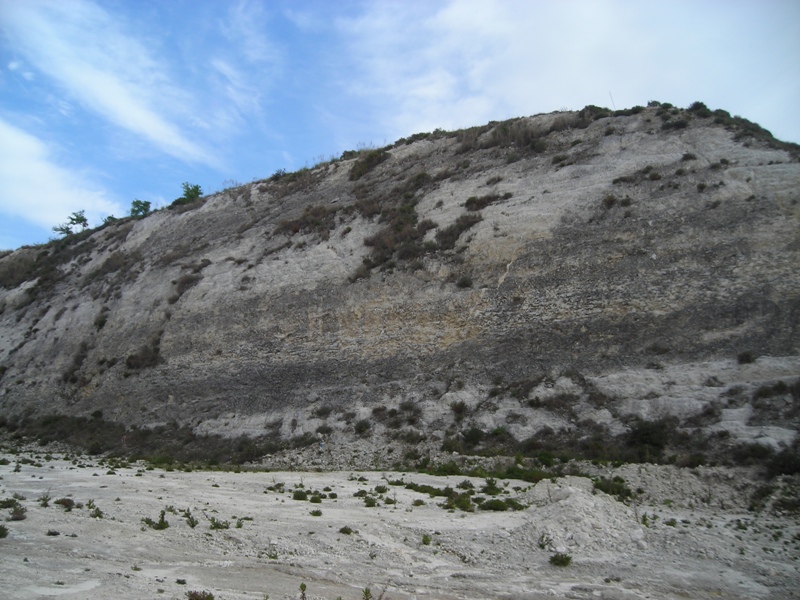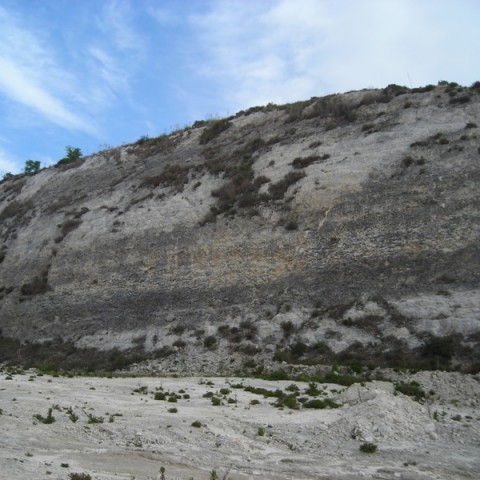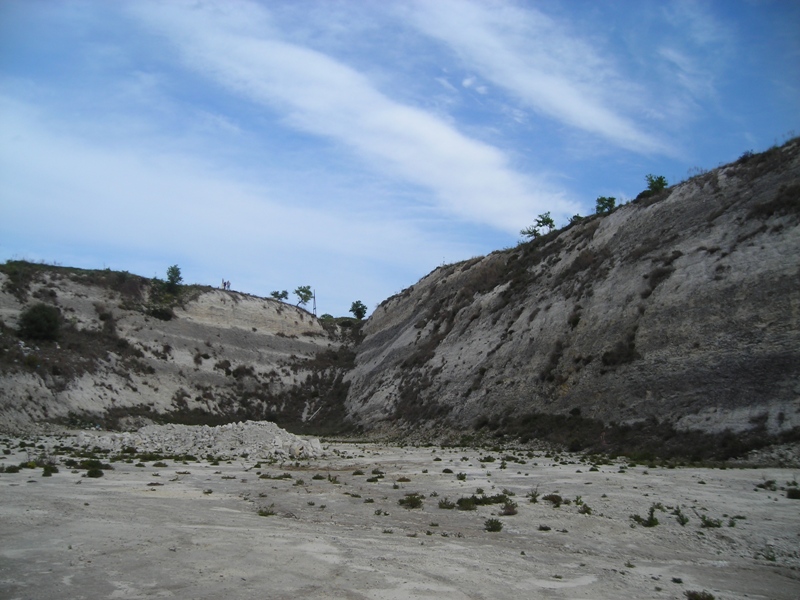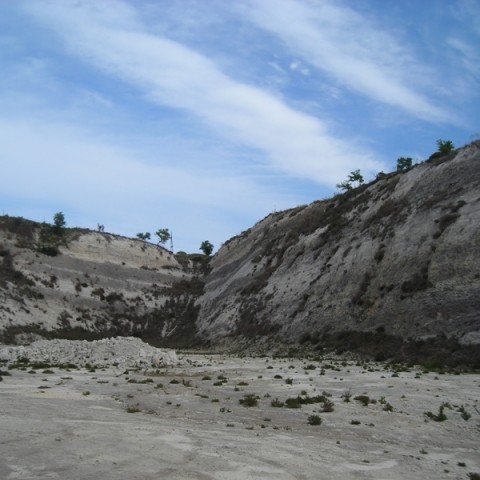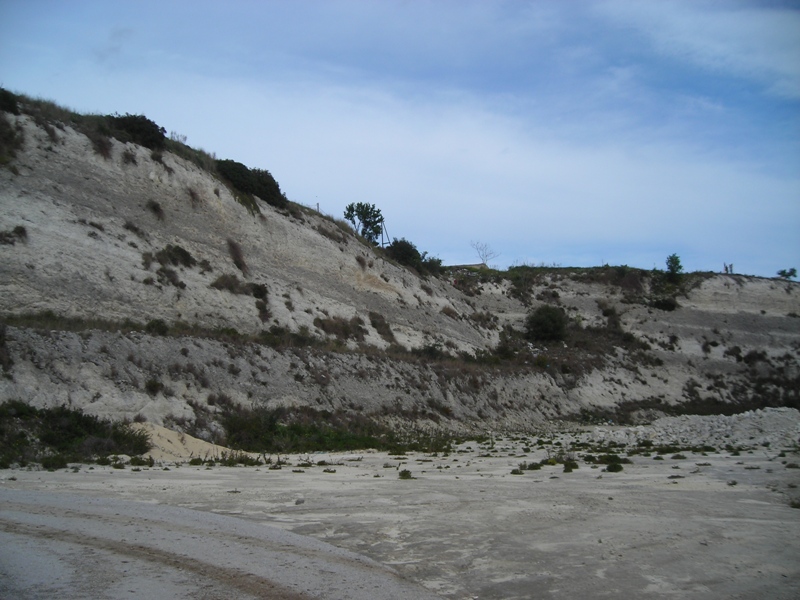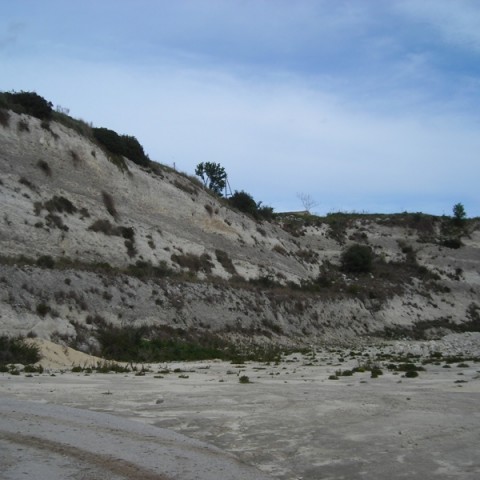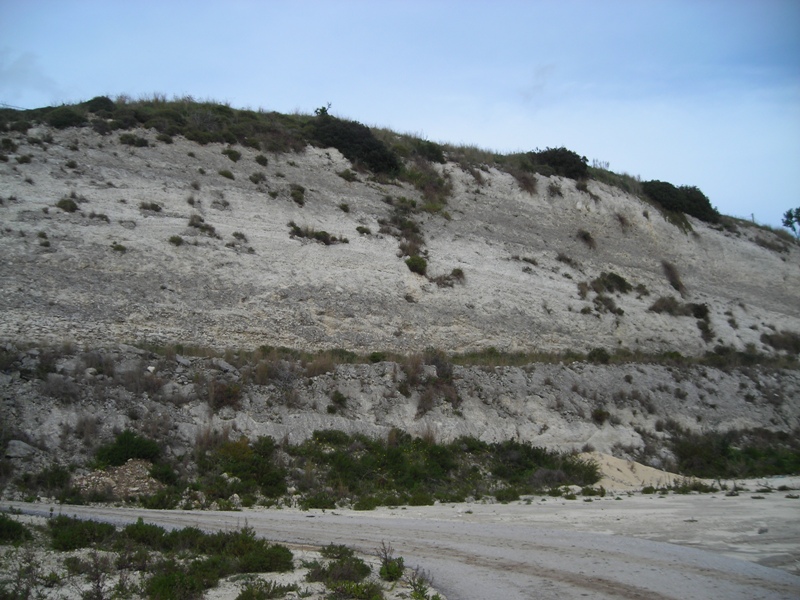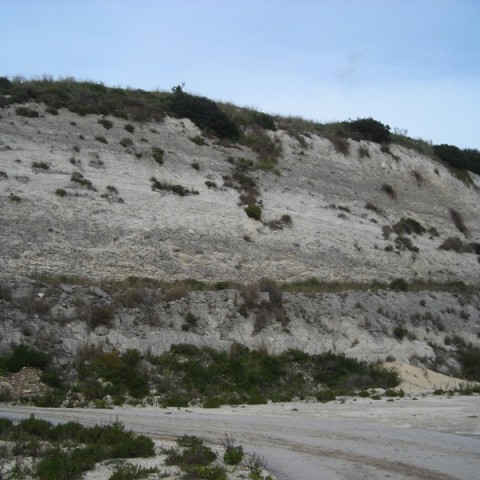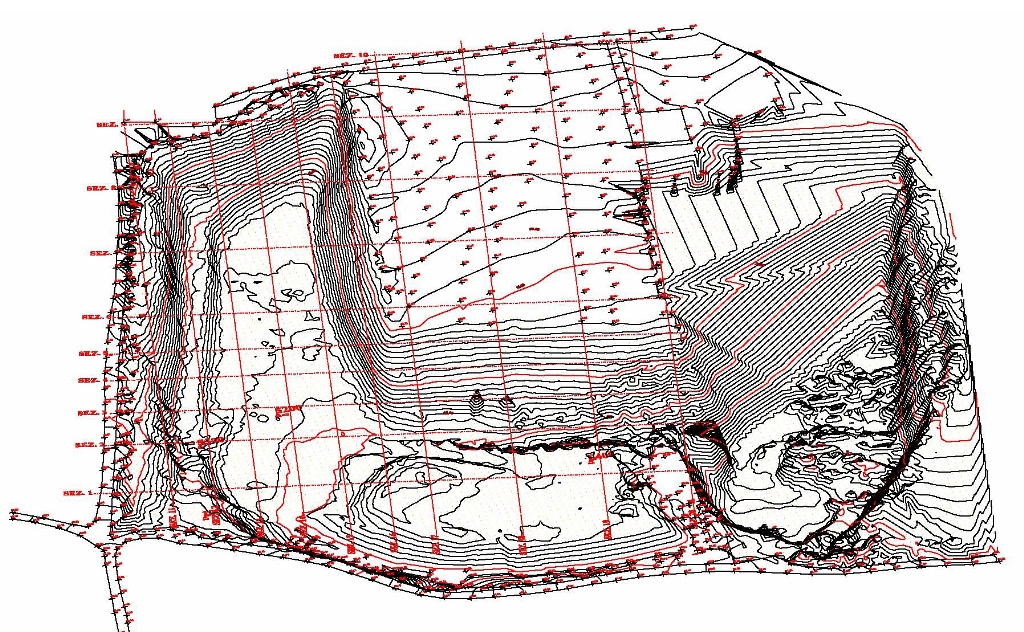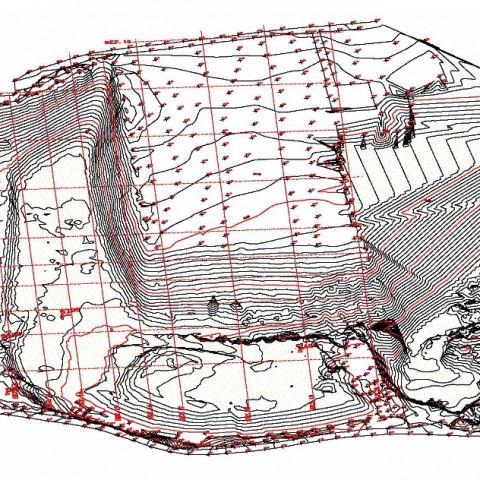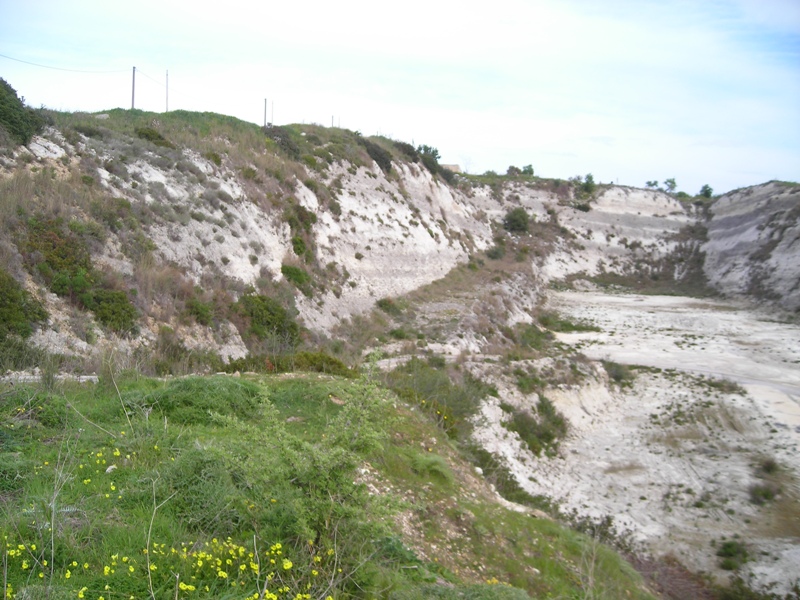project details
Designer: Geom. Antonio Garro, Geom. Paolo Musso
Note: Commissioned by "Laser Engineering" S.A.S. - Survey combined with laser scanners, GPS topographic (base and rover) and total station with laser pointer.
The object of the take-over is, in part, a former quarry where the lower level, compared to the upper level is not affected by the excavations, has a vertical drop of about 20 m with almost sheer walls. Access to the lower floor is a small street with asphalt, while the perimeter on the north, west and south the land is surrounded by local roads, on the east by another former quarry.
Preliminarily was a georeferenced point, marked with the ID 100, through the measurement of static in the IGM point 95 “Augusta (SS 114 – km 130.950)” 274701.
Located on the master receiver sull’IGM, the rover was placed on paragraph 100, materialized with nail and topographic monografato and stationed for about 30 ‘.
For the preparation of baseline IGM-100, the quality is of 0.0003 m and 0.0002 m planimetric on altitude.
The point 100, with coordinates derived from the acquisition static, was then used as the master station for the next relief RTK of the stations 200, 300 and 400, which have simply been used for the acquisition of the target link between the stations laser scanner.
With the GPS in RTK mode, was also performed to measure details points of the upper areas of the lot, the perimeter roads and areas where the presence of vegetation prevented the acquisition with laser scanners.
The geocentric coordinates obtained from GPS were reported locally by the software Verto IGM 2: In Annex 5 shows the relative sizes of the book, due out by Verto.
The lower areas and the walls of the excavation have been measured with Laser Scanner by n. 4 acquisitions.
The post-processing of data was done with software of the laser scanner CYCLONE, while the topographic data were processed by Leonardo SH X with which were also performed sections. Everything is exported to dwg files.
EQUIPMENT USED:
The instrumentation used for the execution of the reliefs was:
– Laser Scanner Leica HDS ScanStation System II;
– GPS Leica GX 1230, enabled to receive the GLONASS constellation;
– No-prism Total Station Leica TCR 1203.
Data processing was performed with:
– VERTO IGM 2, for the transformation of coordinates;
– CYCLONE of LEICA, for modeling and merging point clouds;
– LEONARDO X, of the Leonardo Software House, for the treatment of topographical data;
– Autodesk’s Autocad 2007 for output.

